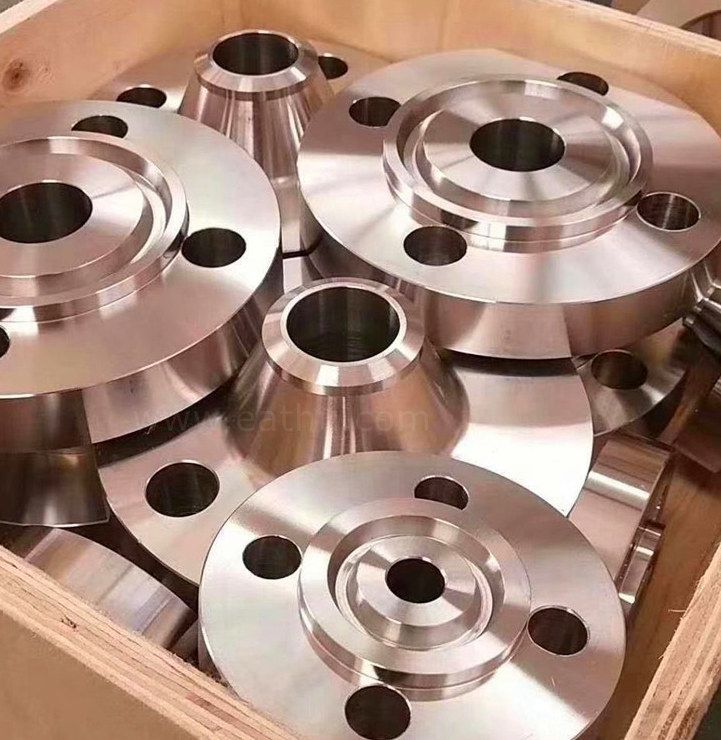The production process of flat flanges is mainly divided into four types: forging, casting, cutting and rolling.
1. Cast flange and forged flange
Casting flange process processing:
Put the steel into an intermediate frequency electric furnace for smelting, so that the temperature of the molten steel reaches 1600-1700℃; preheat the metal mold to 800-900℃ to maintain a constant temperature; start the centrifuge and inject the molten steel into the preheated metal mold; the casting is naturally cooled to 800-900 Keep it at ℃ for 1-10 minutes; cool with water to close to room temperature, demould and take out the casting.
The production process of forged flanges:
Forging flange process: blanking, heating, forming, and cooling after forging the billet. The forging process methods include free forging, die forging and membrane forging. During production, choose different forging methods according to the size and quantity of forgings.
Process flow of die forging flange: The die forging flange has high dimensional accuracy, small machining allowance, and the fiber structure of the forging is more reasonable, which can further improve the service life of the parts.
The basic process of free forging: During free forging, the shape of the forging is gradually forged from the blank through some basic deformation processes. The basic processes of free forging include upsetting, drawing, punching, bending and cutting.
2. Die forging
The full name of die forging is model forging, which is formed by placing the heated blank in a forging die fixed on the die forging equipment.
Basic process of die forging Process of die forging: blanking, heating, pre-forging, final forging, punching and connecting, trimming, quenching and tempering, shot peening. Commonly used processes include upsetting, drawing, bending, punching, and forming.
3. Cutting flange
Directly cut the flange with the inner and outer diameter and thickness of the flange on the middle plate, and then process the bolt holes and waterline. The flange produced in this way is called a cut flange, and the maximum diameter of this type of flange is limited by the width of the middle plate.
4. Rolled flange
The process of cutting the sliver from the middle plate and then rolling it into a circle is called rolling, which is mostly used in the production of some large flanges. After the rolling is successful, welding is performed, then flattened, and then the waterline and bolt holes are processed.
